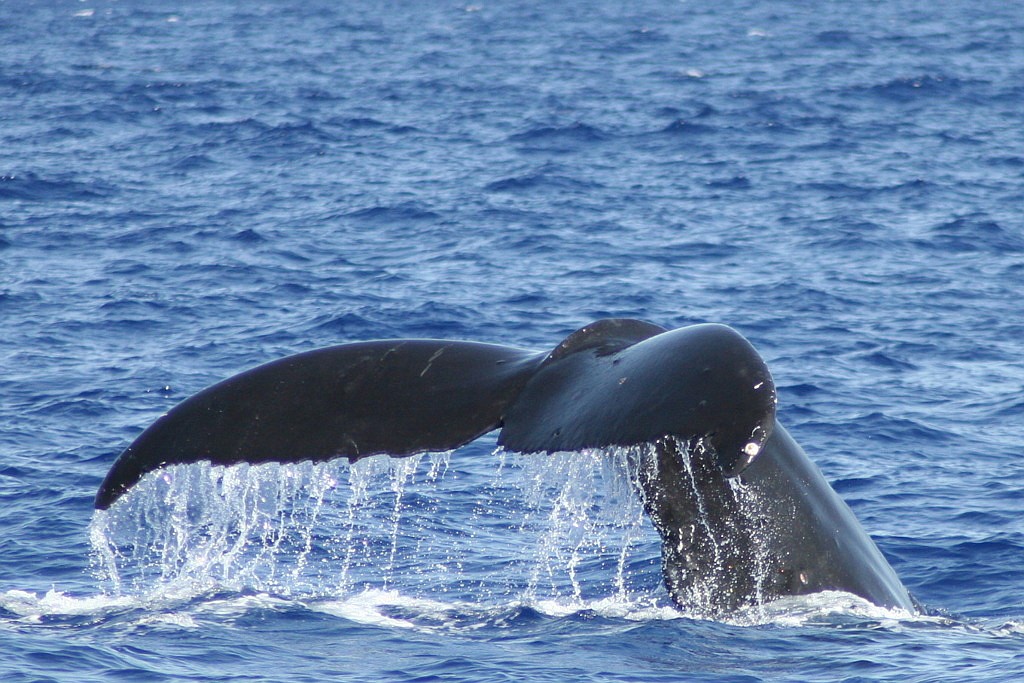- April 25, 2024
-
-
Loading

Loading

The program coordinator says boats and swimmers are required to stay away from the animals.
The busy season is beginning for Joy Hampp, of Palm Coast, program coordinator for Marineland Right Whale Project. She is leading classes around the area, educating people about the whales seen off our coast during the winter and hoping to recruit volunteers to keep track of the endangered mammals.
The project, headquartered in Marineland, is sponsored by the Associated Scientists of Woods Hole, a 501©3 organization in Massachusetts. Their job is to collect data on the right whales and support measures that protect the species.
The whales arrive from the Cape Cod area each year to give birth near the Florida-Georgia line and then winter off northeast Florida where the water is warmer.
“It’s a big area and very few whales,” Hampp said. “We need volunteers to help us find them and collect data.”
There are seeking “opportunistic spotters,” who call the group whenever they see a whale, and “surveyors,” who travel in groups to selected places to keep watch.
The surveyors go out for four hours, one day per week, for 10 weeks.
“Then you can have lunch with the friends you just made,” Hampp said.
About 25 people packed the meeting room at the Ormond Beach Regional Library on Dec. 6 to hear a presentation by Hampp and volunteer Becki Smith. Some were volunteers from previous years, and others had seen whales off the coast and wanted information about the project.
The geography of the area is the reason for the local sightings, Hampp explained. The sea bottom drops off quickly, so the whales are close to shore, sometimes just outside the breakers. Hampp said that makes it possible to collect data about the mammals in an unobtrusive way.
She said there are about 500 right whales in existence, and only about 50 to 70 come down to Florida. They don’t know where the rest go.
“The ocean still has its mysteries,” she said.
To spot a whale, Hampp said to watch the ocean with unaided eyes, because the eyes are programmed to see objects or movements that are “out of order.” When you think you see a whale, then use binoculars, she said.
When a whale blows, the mist hangs in the wind for a while, unlike the splash caused by a bird diving in the ocean. Also, the right whale has a V-shaped blow, visible on nonwindy days.
Right whales often float near the surface with 10% of their body showing, so they are usually seen as a black line with a white ruffle of surf. If the ocean is choppy with lots of white caps, it is very difficult to see them, Hampp said.
Another thing to watch for is a large group of dolphins, because they often accompany the whales.
One of the main characteristics of the right whale is that there is no dorsal fin, unlike the humpback. There are also white spots on the head and a black fluke. Humpback whales have a fluke that is white on the bottom.
The whales are mostly endangered by being hit by large ships, 65-feet or larger, but can also be seriously injured and killed by small recreational boats.
“There are laws in place,” she said. “You must be 500 yards away. Even if a whale comes to you, you are required to move away at idle speed.”
She said the law also applies to surfers and paddle boarders. Another reason is safety, because the mother will protect the calf.
The surveys begin Jan. 4. For information about being a surveyor, or dedicated volunteer, call 904-461-4058 or visit aswh.org. To be an opportunistic volunteer, call 888-979-4253 or register at mrcirl.org.